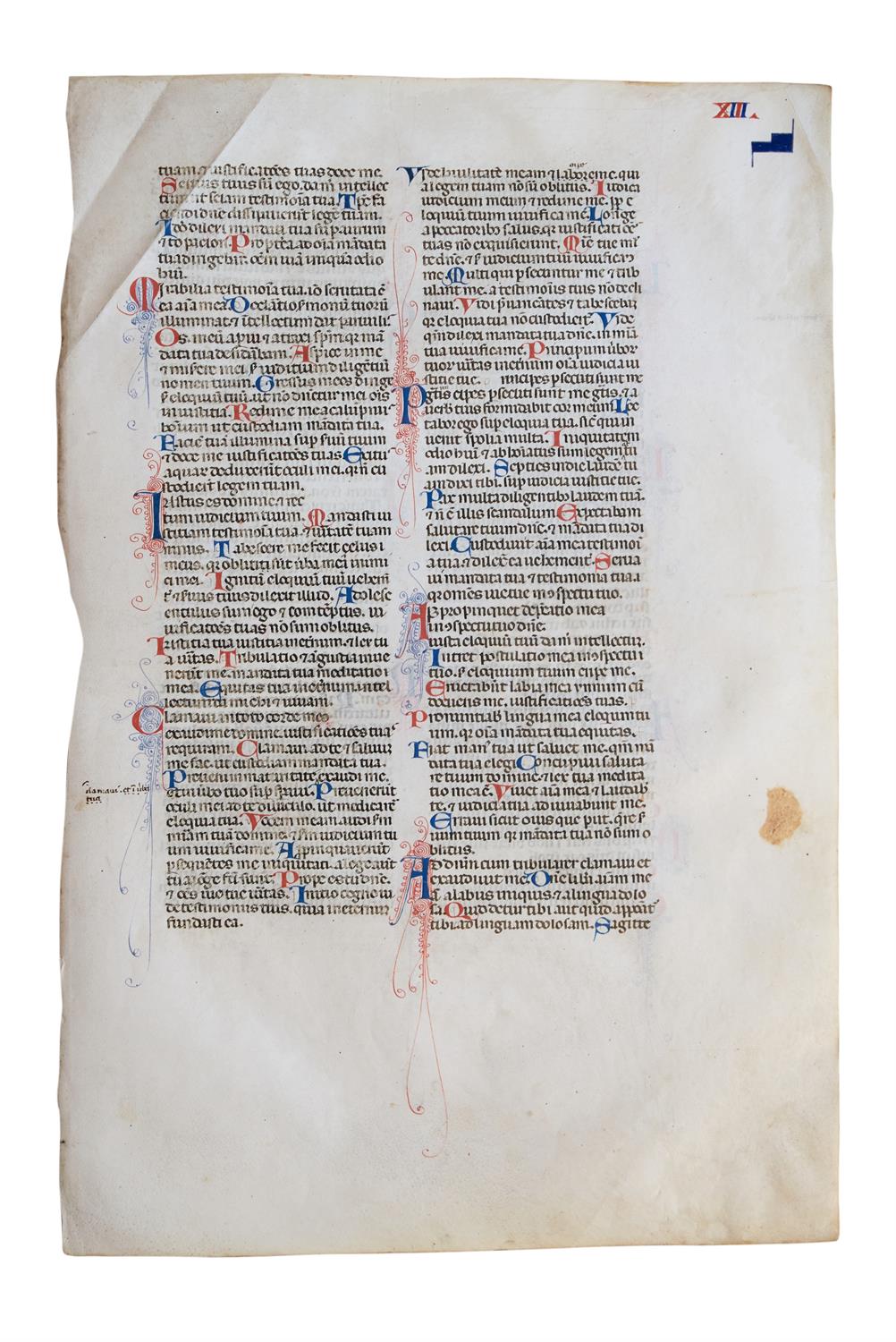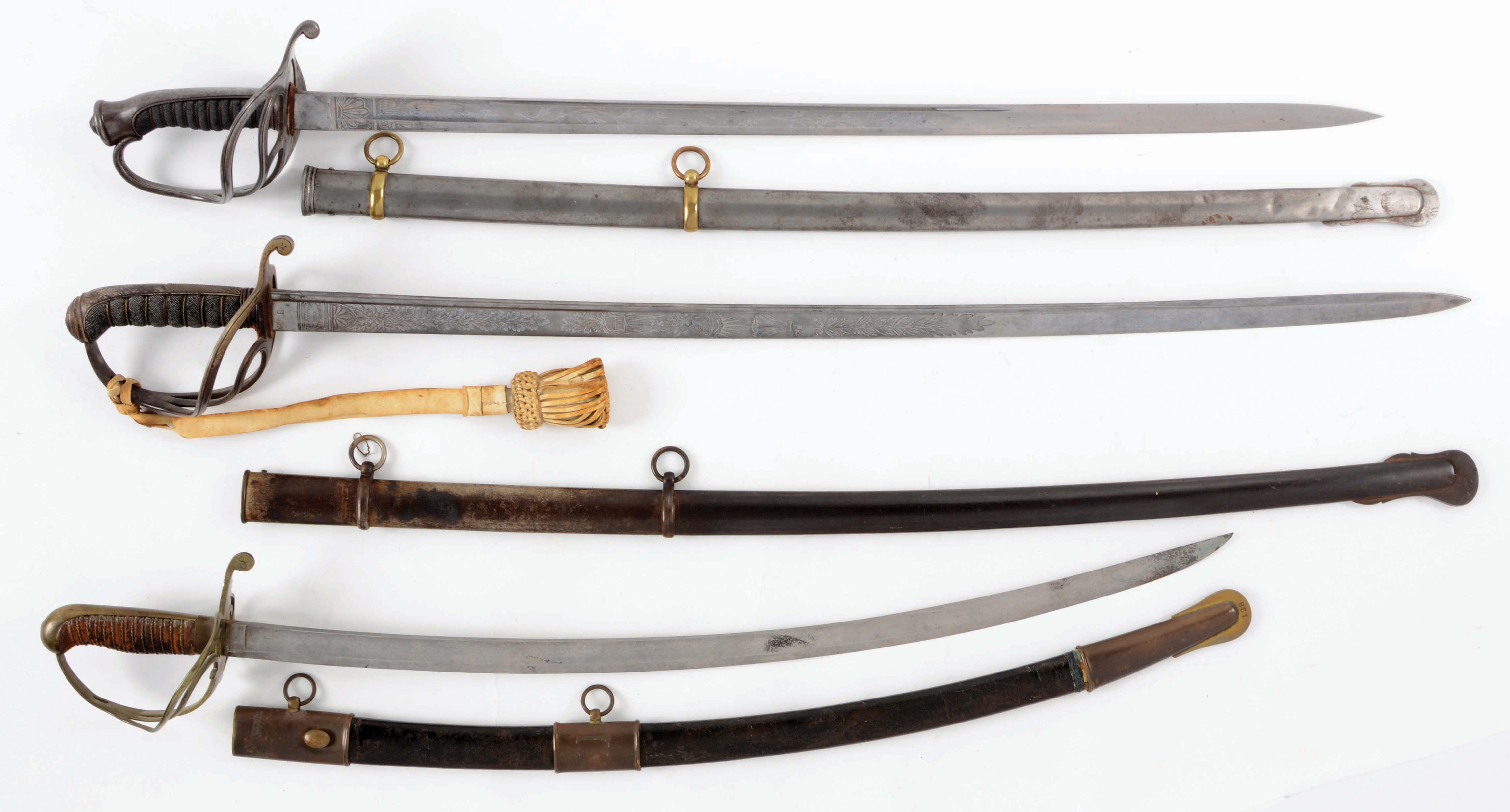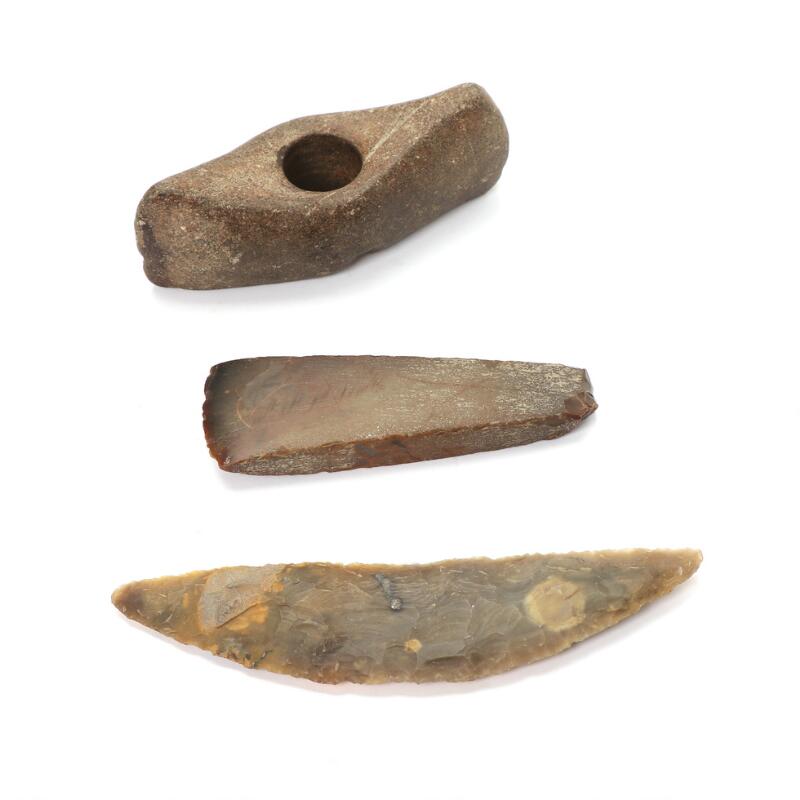Two long and thin frisket fragments, cuttings from twelfth- and fifteenth-century parchment manuscripts, with red ink added to their surfaces during their reuse in the early printing process [twelfth- and fifteenth/sixteenth century] Two long strips, one cut horizontally from a twelfth-century French copy of the Book of Judith, with remains of double column and 6 lines, another cut lengthways from a fifteenth-century French liturgical book with remains of a single column, 32 lines, both with characteristic pillar-box holes cut in body and sides for use in allowing the printing of red rubrics through them, and with legible type in red ink from reuse in printing press, reused in bindings and with concomitant damage, both approximately 255 by 45 mm. From a Continental collection. Friskets are an important witness to the early printing of books in both red and black ink. The frisket itself is the sheet of material which lies between the paper and the print block on an early printing press, and which masks off all but the red rubrics (which are printed through the small pillar-box-like holes as here), leaving these guard-sheets covered in red ink. The pioneering work of E. Savage into such fragments (‘Red Frisket Sheets, c.1490-1630’, Papers of the Bibliographical Society of America, 108:4, 2014, listing 21 there, but not the present examples; previously only studied in Margaret Smith ‘Fragments used for Servile Purposes: The St Bride Library Frisket for Early Red Printing’, in Interpreting and Collecting Fragments of Medieval Books, 1998) has firmly placed them on the academic map, and as frequently occurs, following our sale of one in our inaugural sale on 8 July 2015, lot 27, a number of private collectors returned to their own collections of fragments and have identified previously overlooked examples there. We sold another pair in our second sale on 9 December 2015, lot 36, and another large piece subsequently emerged in Dominic Winter, 2 March 2016, lot 331. That said, from a viewpoint longer than the last twelve months, they remain of the utmost rarity, and those listed here are the only identified ones to ever come to the open market. The present examples were used in the printing of a volume with very large type and thus the legibility of the red secondary ink (and the potential for identifying the text they were used to print) is greatly increased.
Two long and thin frisket fragments, cuttings from twelfth- and fifteenth-century parchment manuscripts, with red ink added to their surfaces during their reuse in the early printing process [twelfth- and fifteenth/sixteenth century] Two long strips, one cut horizontally from a twelfth-century French copy of the Book of Judith, with remains of double column and 6 lines, another cut lengthways from a fifteenth-century French liturgical book with remains of a single column, 32 lines, both with characteristic pillar-box holes cut in body and sides for use in allowing the printing of red rubrics through them, and with legible type in red ink from reuse in printing press, reused in bindings and with concomitant damage, both approximately 255 by 45 mm. From a Continental collection. Friskets are an important witness to the early printing of books in both red and black ink. The frisket itself is the sheet of material which lies between the paper and the print block on an early printing press, and which masks off all but the red rubrics (which are printed through the small pillar-box-like holes as here), leaving these guard-sheets covered in red ink. The pioneering work of E. Savage into such fragments (‘Red Frisket Sheets, c.1490-1630’, Papers of the Bibliographical Society of America, 108:4, 2014, listing 21 there, but not the present examples; previously only studied in Margaret Smith ‘Fragments used for Servile Purposes: The St Bride Library Frisket for Early Red Printing’, in Interpreting and Collecting Fragments of Medieval Books, 1998) has firmly placed them on the academic map, and as frequently occurs, following our sale of one in our inaugural sale on 8 July 2015, lot 27, a number of private collectors returned to their own collections of fragments and have identified previously overlooked examples there. We sold another pair in our second sale on 9 December 2015, lot 36, and another large piece subsequently emerged in Dominic Winter, 2 March 2016, lot 331. That said, from a viewpoint longer than the last twelve months, they remain of the utmost rarity, and those listed here are the only identified ones to ever come to the open market. The present examples were used in the printing of a volume with very large type and thus the legibility of the red secondary ink (and the potential for identifying the text they were used to print) is greatly increased.














Testen Sie LotSearch und seine Premium-Features 7 Tage - ohne Kosten!
Lassen Sie sich automatisch über neue Objekte in kommenden Auktionen benachrichtigen.
Suchauftrag anlegen